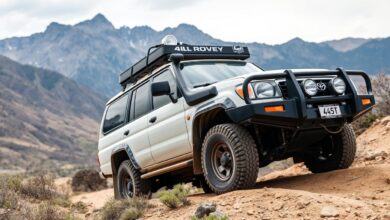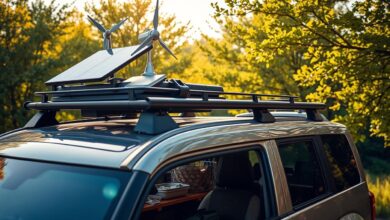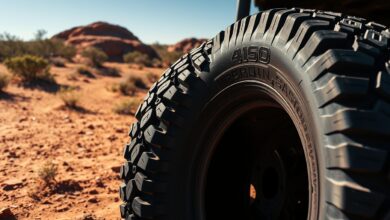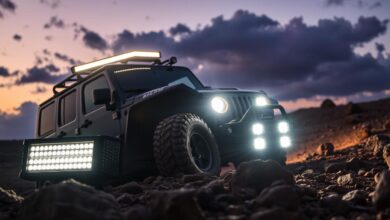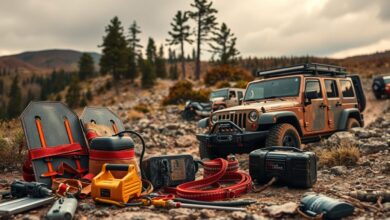Top 4WD Gear You Need for Off-Roading in 2024
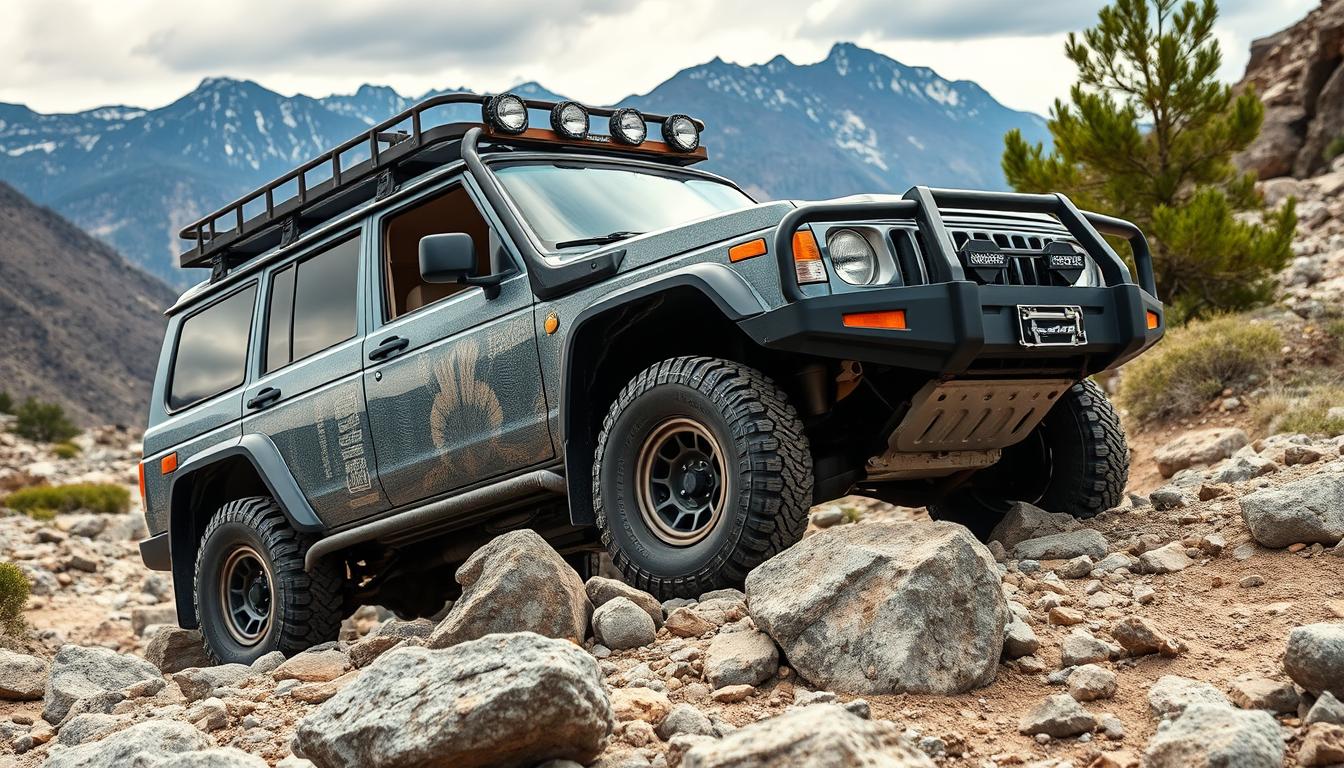
Protection & Recovery Accessories
When venturing off-road, your vehicle faces numerous hazards from rocks, branches, water crossings, and unpredictable terrain. Protection accessories shield vital components from damage, while recovery gear ensures you can escape challenging situations without calling for rescue.
Pro Tip: Always travel with at least one other vehicle when tackling serious off-road trails. Even the best recovery equipment works better with assistance, and having a backup vehicle provides an extra safety margin.
1. Bull Bars
A quality bull bar provides essential front-end protection against animal strikes and obstacles while serving as a mounting point for winches and driving lights. Look for models that maintain airbag compatibility and proper approach angles.
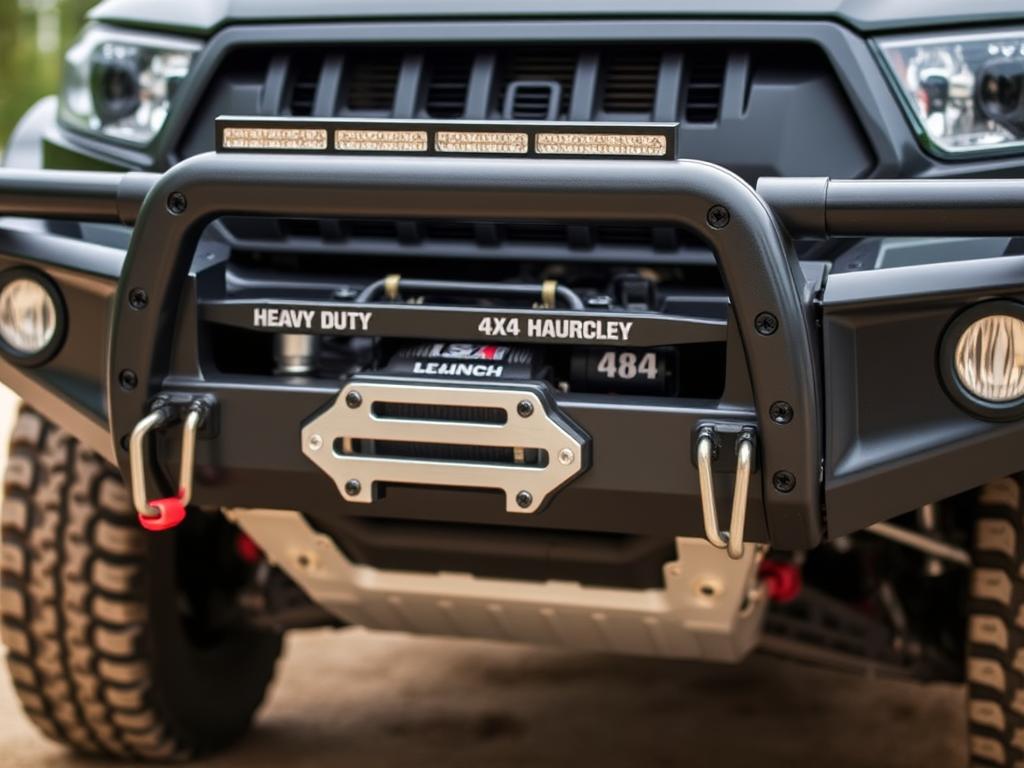
2. Rock Sliders
Rock sliders protect your vehicle’s vulnerable door sills and rocker panels from impacts with rocks, logs, and other obstacles. Unlike basic side steps, proper rock sliders are engineered to bear the full weight of your vehicle when sliding off obstacles.
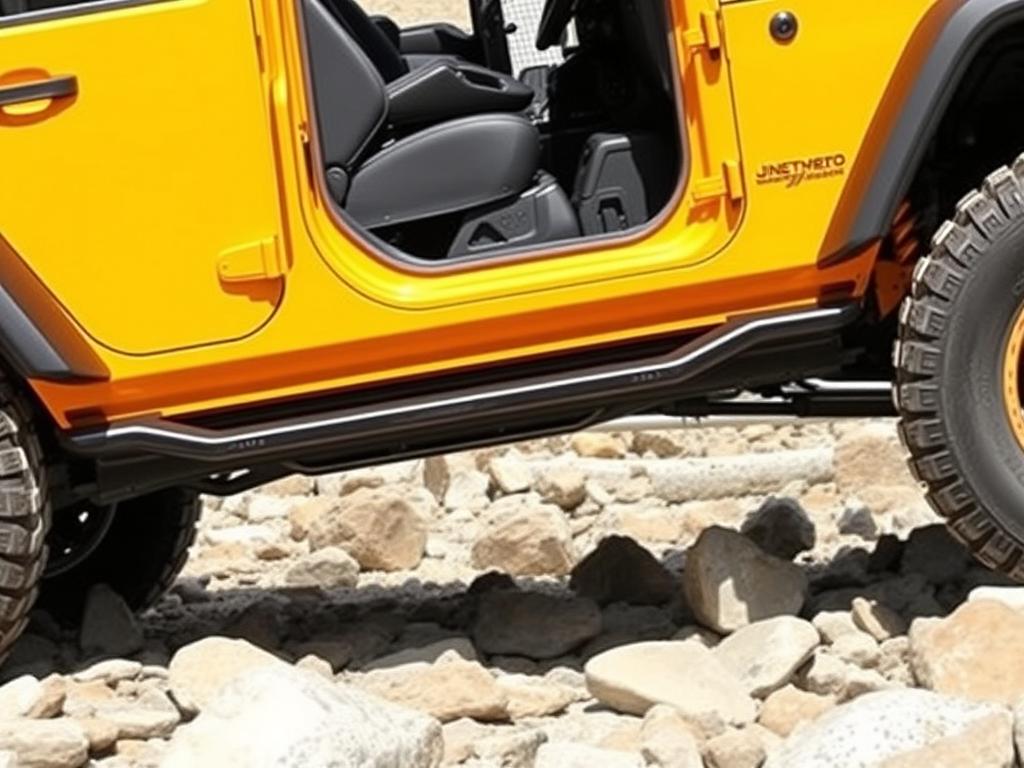
3. Underbody Protection (Bash Plates)
Bash plates shield your vehicle’s vital components—engine, transmission, transfer case, and fuel tank—from rocks and obstacles. Aluminum plates offer a good balance of protection and weight, while steel provides maximum durability for extreme conditions.
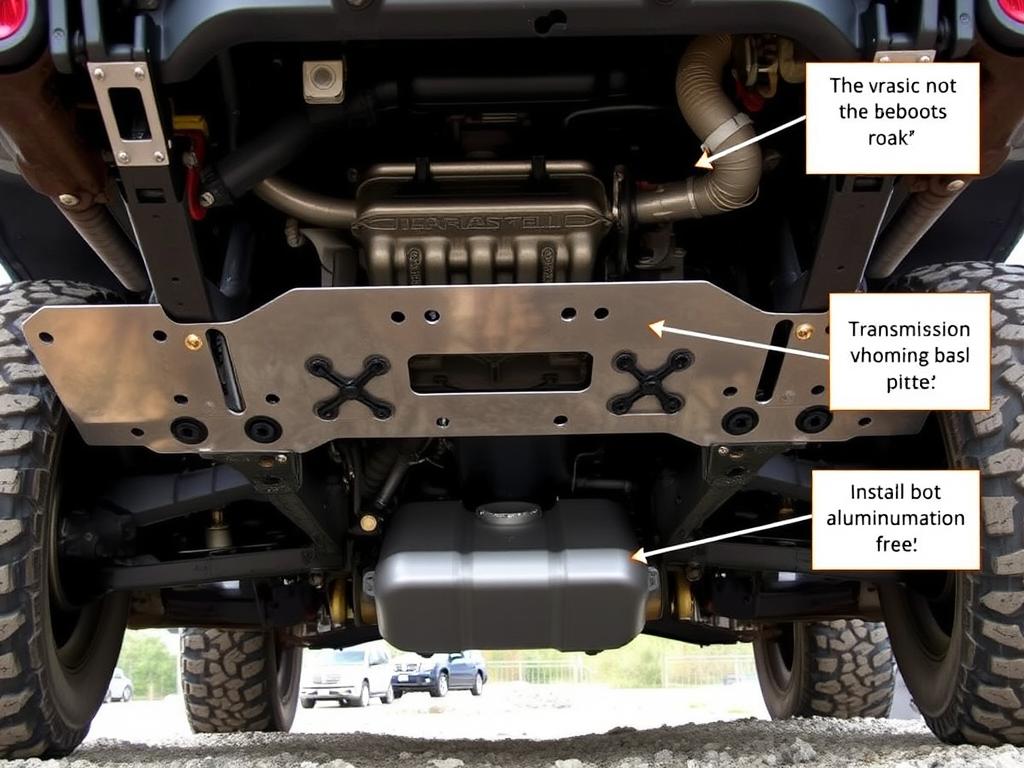
4. Electric Winch
A reliable winch can be your ticket out of challenging situations. Modern synthetic rope winches offer excellent strength-to-weight ratios and eliminate the hazards associated with steel cable. Look for models with at least 9,500 lbs capacity for mid-sized 4x4s.
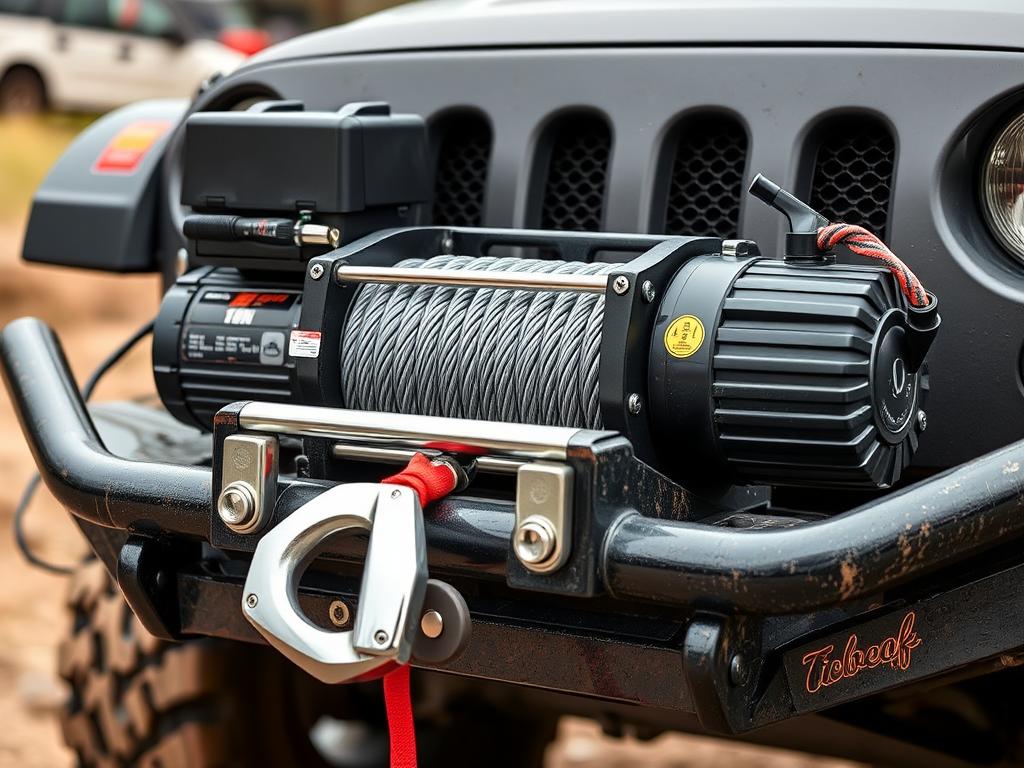
5. Recovery Tracks
Recovery tracks provide instant traction when stuck in sand, mud, or snow. These lightweight, durable boards can be placed under wheels to help your vehicle drive out of challenging situations without requiring another vehicle for recovery.
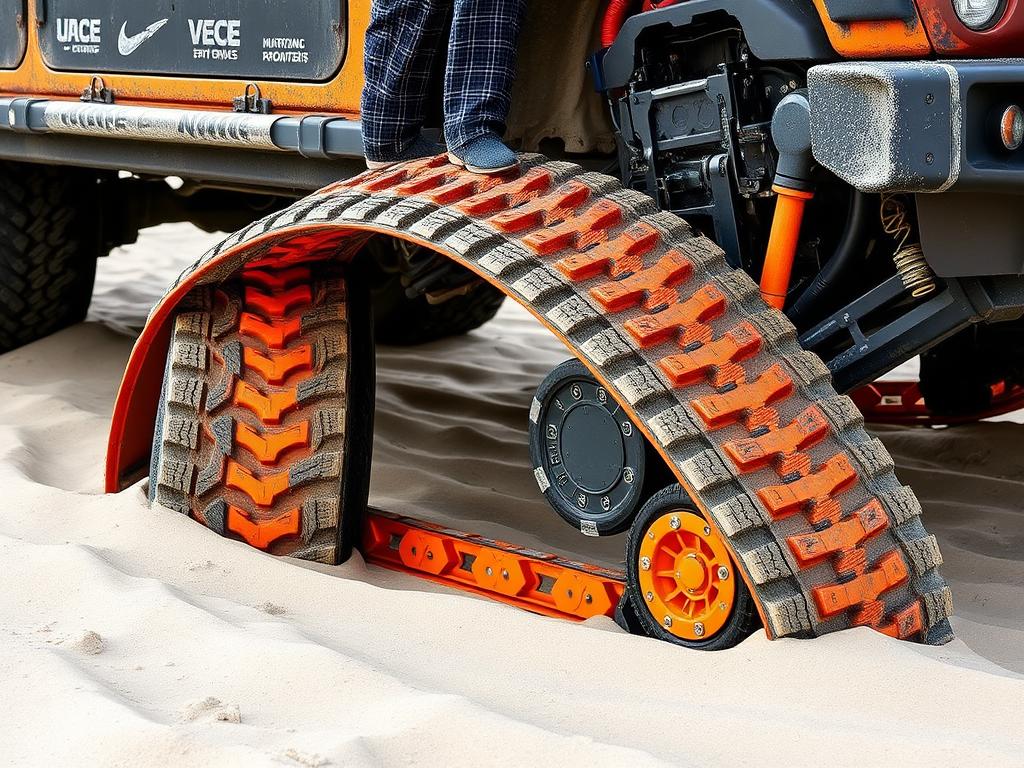
| Protection & Recovery Item | Average Price Range | Installation Difficulty | Essential Rating |
| Bull Bar | $800-$2,500 | Professional Recommended | 5/5 |
| Rock Sliders | $400-$1,200 | Moderate | 4/5 |
| Bash Plates | $300-$1,000 | Moderate | 4/5 |
| Electric Winch | $500-$2,000 | Professional Recommended | 4/5 |
| Recovery Tracks | $150-$400 | None (Portable) | 5/5 |
Protect Your Investment
Quality protection accessories are an investment in your vehicle’s longevity and your safety on the trails.
Lighting Accessories
Proper lighting is crucial for off-road adventures, especially when traveling at night or in low-visibility conditions. Enhanced lighting not only improves safety but also extends your adventure capabilities beyond daylight hours.
Pro Tip: Consider a combination of lighting types for maximum versatility. Spotlights provide long-distance visibility, while flood lights illuminate a wider area at shorter distances—ideal for campsite setup or vehicle repairs after dark.
1. LED Light Bars
LED light bars deliver exceptional brightness and durability while consuming minimal power. Available in various lengths and beam patterns, they can transform night into day on remote trails. Look for models with combination beam patterns for versatility.
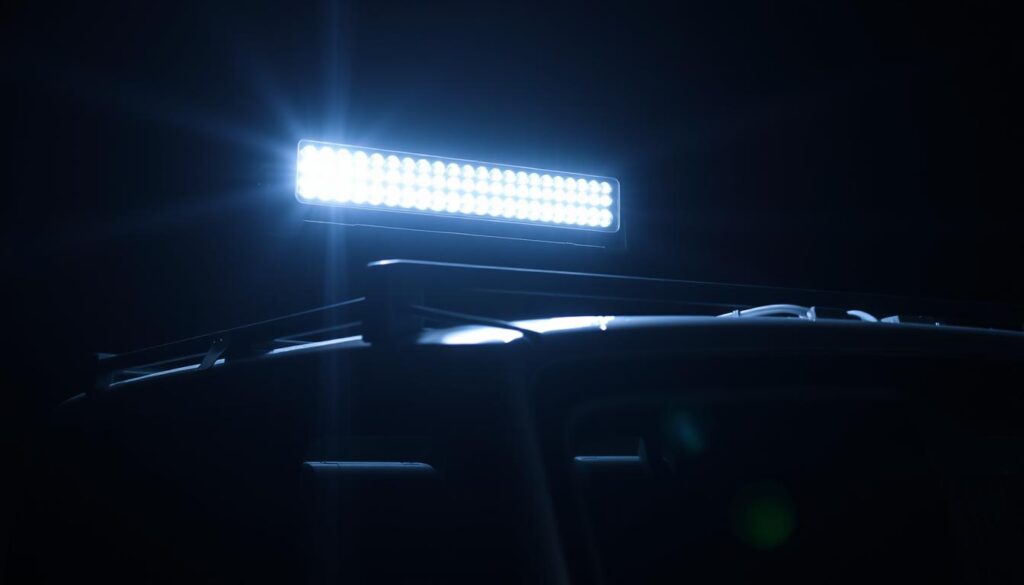
2. Driving Lights
Round or square driving lights mounted to your bull bar provide focused, long-distance illumination. Modern LED driving lights offer exceptional light output with minimal power draw, making them ideal for extended night driving without taxing your electrical system.
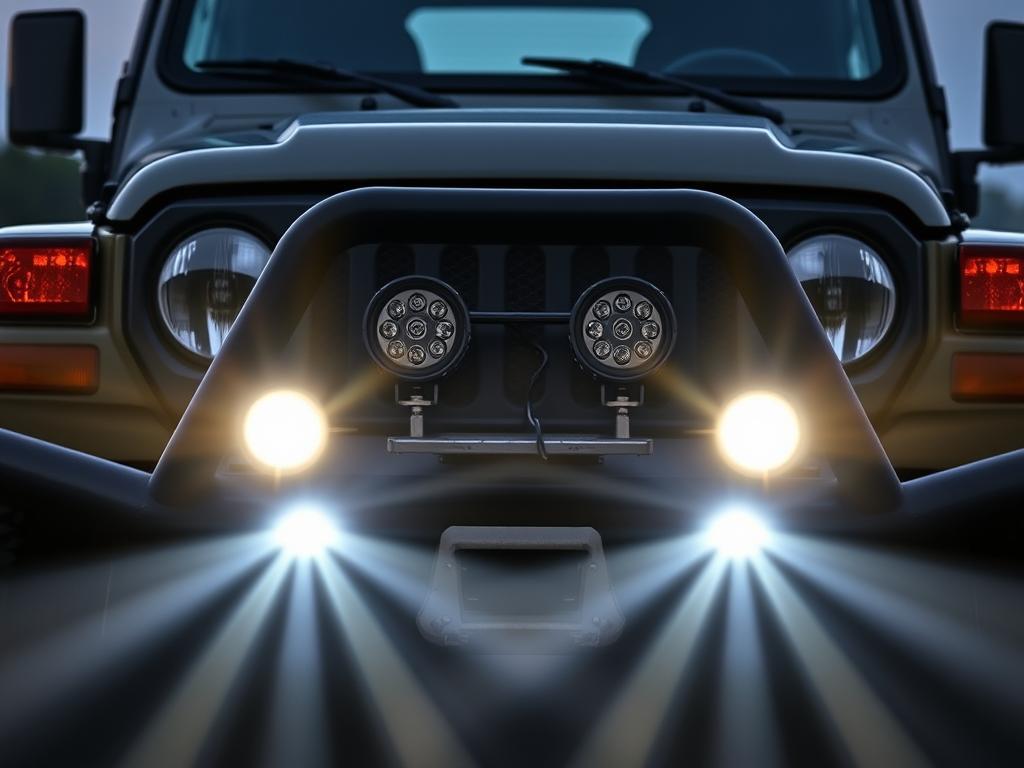
3. Work Lights
Portable or mounted work lights provide targeted illumination for camp setup, vehicle repairs, or area lighting. Look for rechargeable models with adjustable brightness and magnetic bases for versatility in various situations.
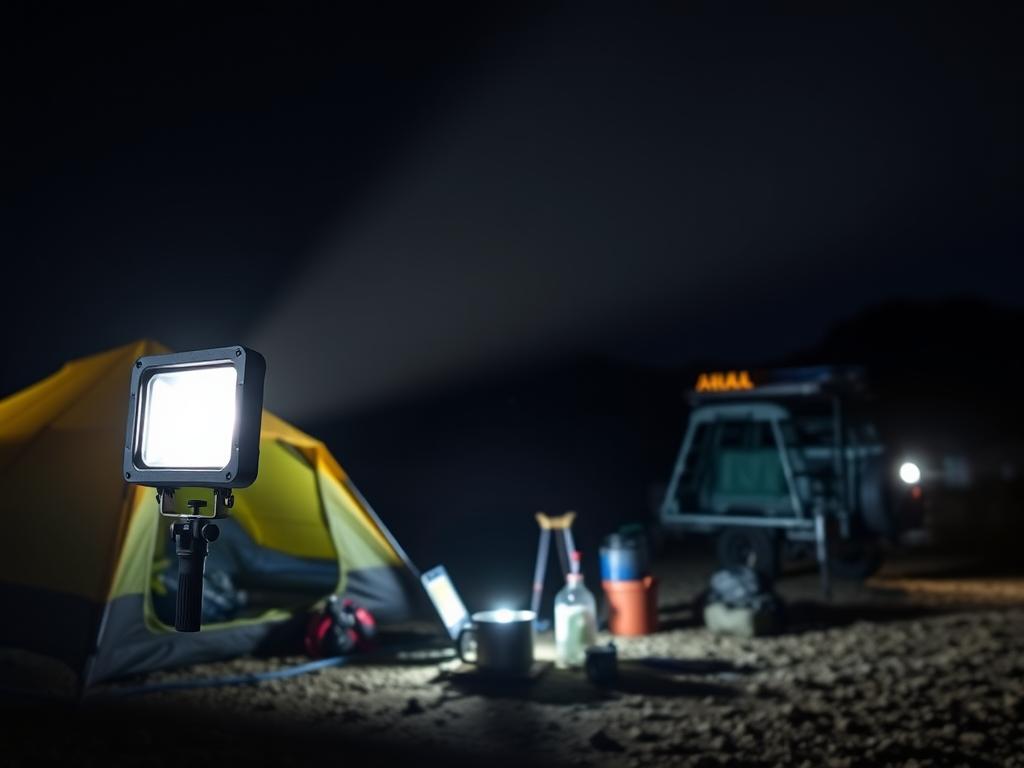
4. Rock Lights
Undercarriage rock lights help you navigate technical obstacles in low-light conditions by illuminating the terrain directly beneath and around your vehicle. These compact LED lights are typically mounted to frame rails or differential covers.
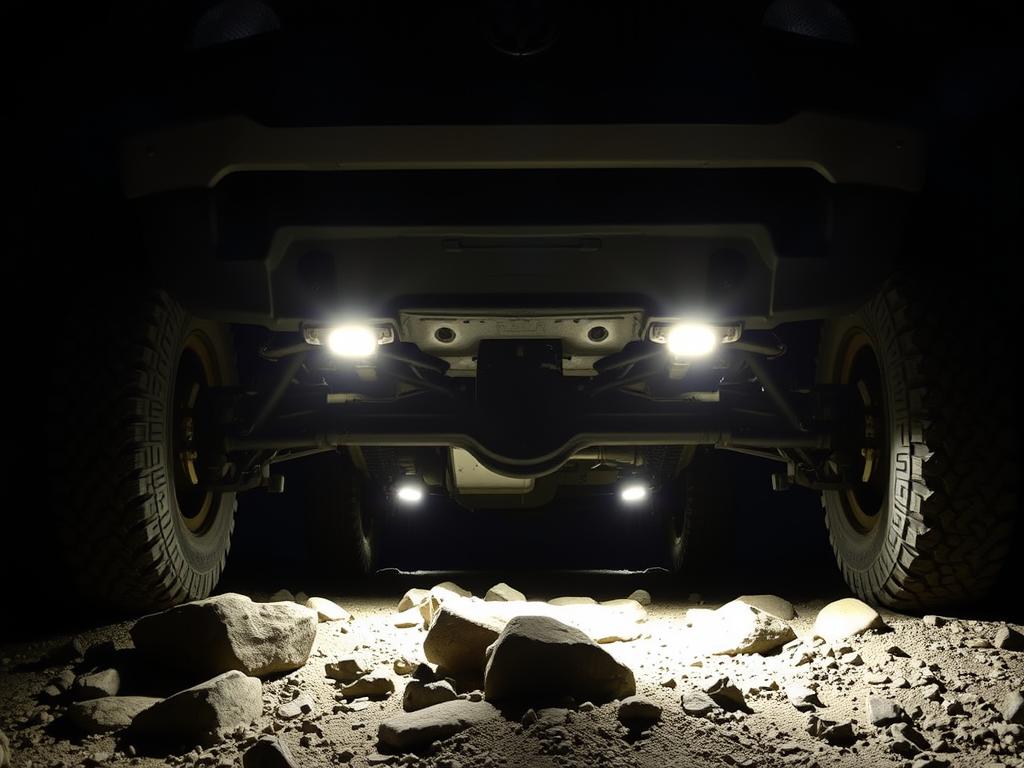
5. Interior LED Lighting
Enhanced interior lighting makes finding gear or reading maps much easier after dark. Retrofit LED dome lights and additional task lighting in cargo areas significantly improve functionality during overnight adventures.
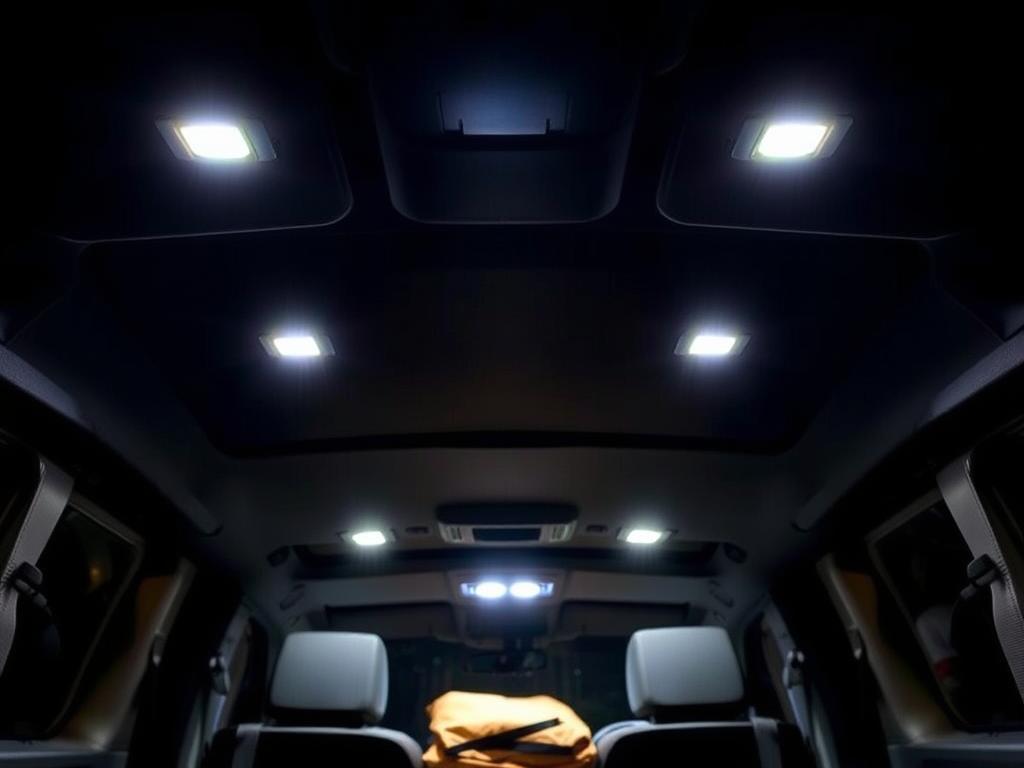
| Lighting Accessory | Average Price Range | Installation Difficulty | Power Consumption |
| LED Light Bar (32″) | $200-$800 | Moderate | 120-180W |
| LED Driving Lights (Pair) | $300-$1,000 | Moderate | 50-150W |
| Work Lights | $50-$200 | Easy | 10-50W |
| Rock Lights (Set of 4) | $100-$300 | Moderate | 20-40W |
| Interior LED Upgrade | $30-$150 | Easy | 5-15W |
Light Up Your Adventures
Don’t let darkness limit your exploration. Proper lighting extends your adventure capabilities and enhances safety.
Storage & Cargo Management
Effective storage solutions are essential for organizing gear, maximizing space, and ensuring your equipment remains secure and accessible during off-road adventures. Quality storage accessories help transform your 4×4 into a functional expedition vehicle.
Pro Tip: When planning your storage system, prioritize frequently accessed items by keeping them easily reachable. Store emergency equipment where it can be accessed without unpacking everything else.
1. Roof Racks
A quality roof rack system expands your cargo capacity significantly, allowing you to carry bulky items like recovery boards, spare tires, or camping equipment. Look for platforms with adjustable mounting points and adequate load ratings for your needs.
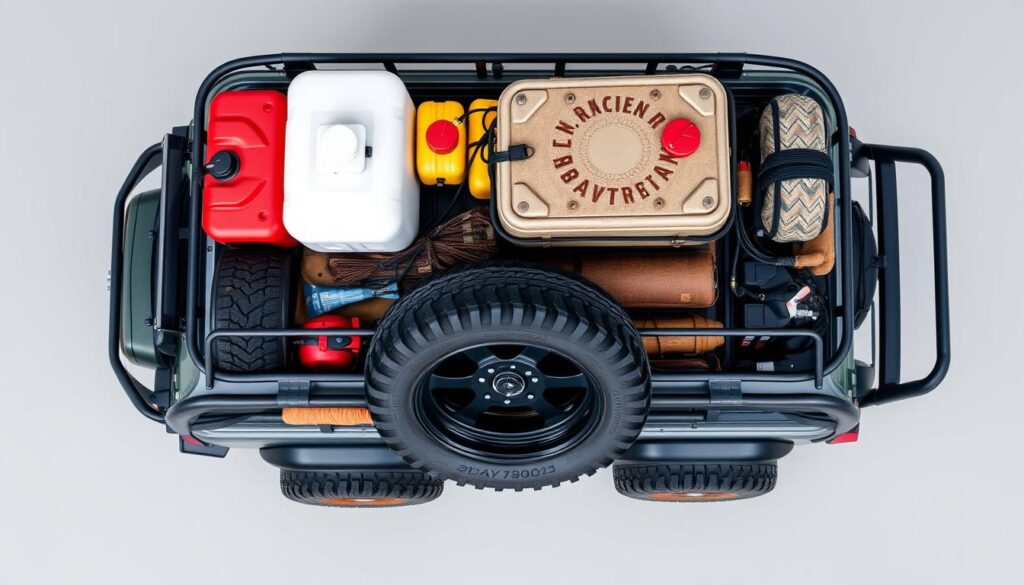
2. Drawer Systems
Cargo drawer systems transform your vehicle’s rear storage area into an organized, accessible space. Quality systems feature lockable, dust-resistant drawers that can be customized with dividers and tie-down points for maximum versatility.
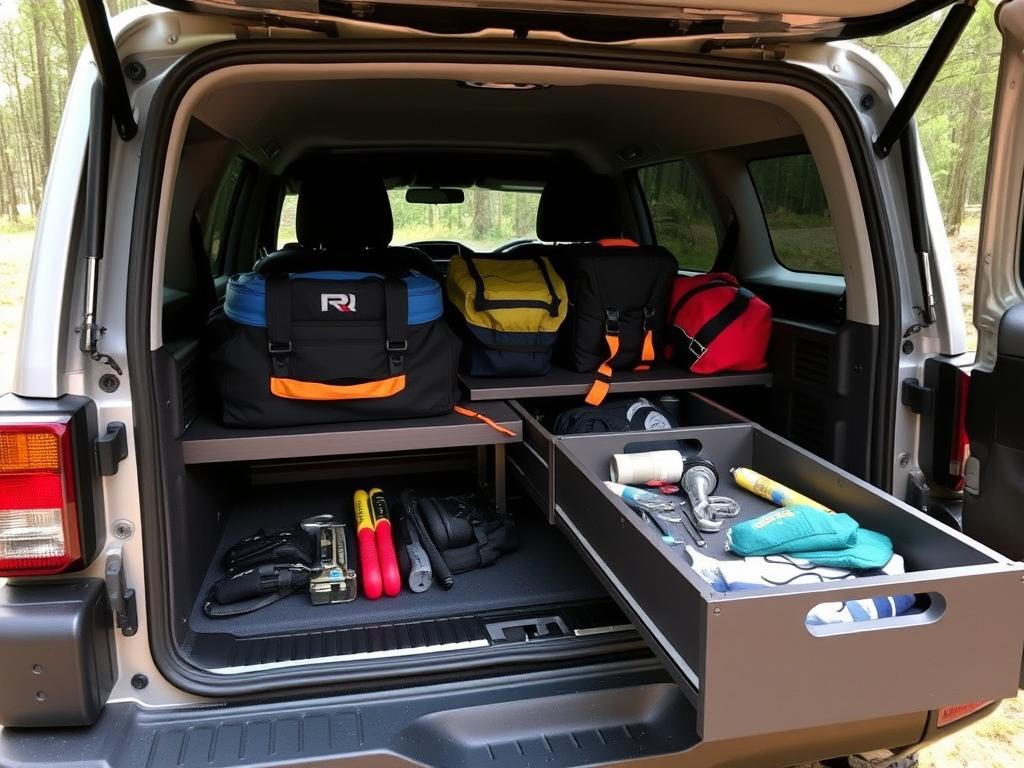
3. Roof-Top Storage Boxes
Weatherproof roof boxes provide secure, protected storage for items that need to stay clean and dry. Modern designs offer aerodynamic profiles to minimize fuel consumption and noise while maximizing storage capacity.
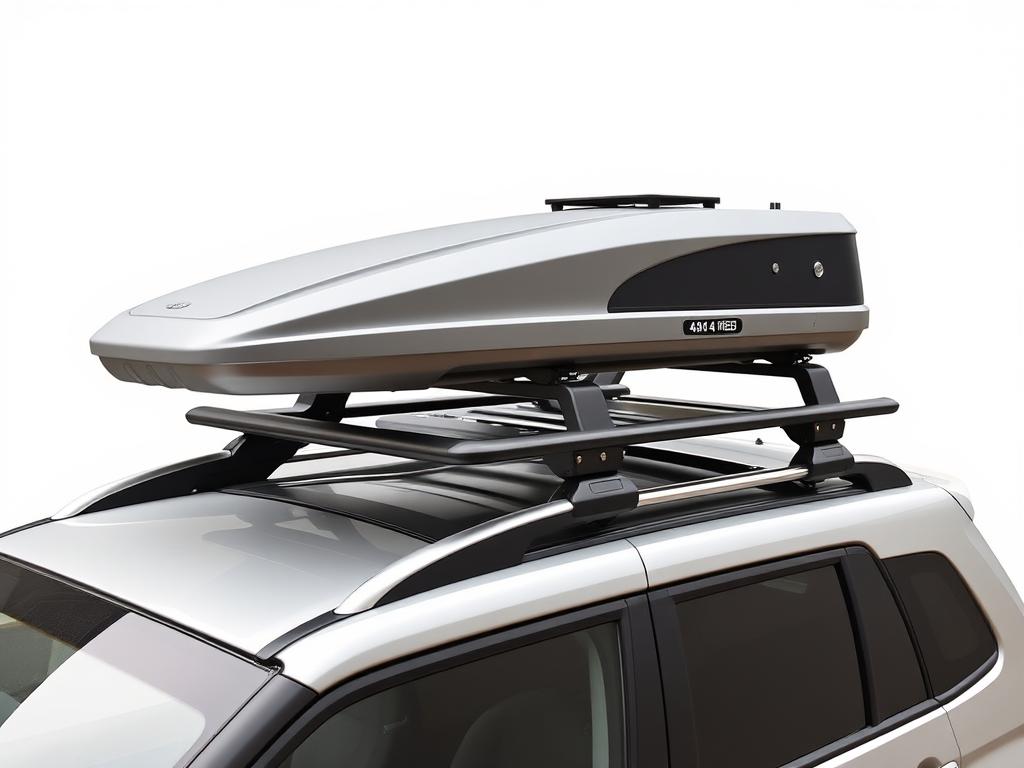
4. Cargo Barriers
Cargo barriers separate passengers from gear, preventing items from becoming dangerous projectiles during sudden stops or rollovers. They also create a defined cargo space that can be maximized with additional organization systems.

5. Tailgate Storage Panels
Tailgate organizers utilize the often-overlooked inner tailgate space for storing recovery tools, first aid supplies, or cooking utensils. These panels typically feature pouches, elastic straps, and MOLLE webbing for versatile organization.

| Storage Accessory | Average Price Range | Installation Difficulty | Weight Capacity |
| Full-Length Roof Rack | $500-$1,800 | Moderate | 100-300kg (static) |
| Drawer System | $800-$2,500 | Moderate | 70-150kg per drawer |
| Roof-Top Storage Box | $400-$1,200 | Easy | 50-100kg |
| Cargo Barrier | $300-$800 | Moderate | N/A (Safety Device) |
| Tailgate Storage Panel | $100-$350 | Easy | 10-20kg |
Organize Your Adventure
Proper storage solutions keep your gear secure, accessible, and protected during your off-road journeys.
Comfort & Convenience Accessories
Long days on rough trails can be physically demanding. Comfort accessories help reduce fatigue, make camp setup easier, and enhance your overall off-road experience, allowing you to enjoy the journey as much as the destination.
Pro Tip: Invest in comfort items based on your typical trip duration. Weekend warriors might prioritize different accessories than those planning extended expeditions or full-time overlanding.
1. Portable 12V Fridge/Freezer
A quality 12V fridge eliminates the hassle of ice and soggy food, providing reliable refrigeration for extended trips. Modern compressor fridges offer excellent efficiency and can maintain freezing temperatures even in hot climates when properly powered.
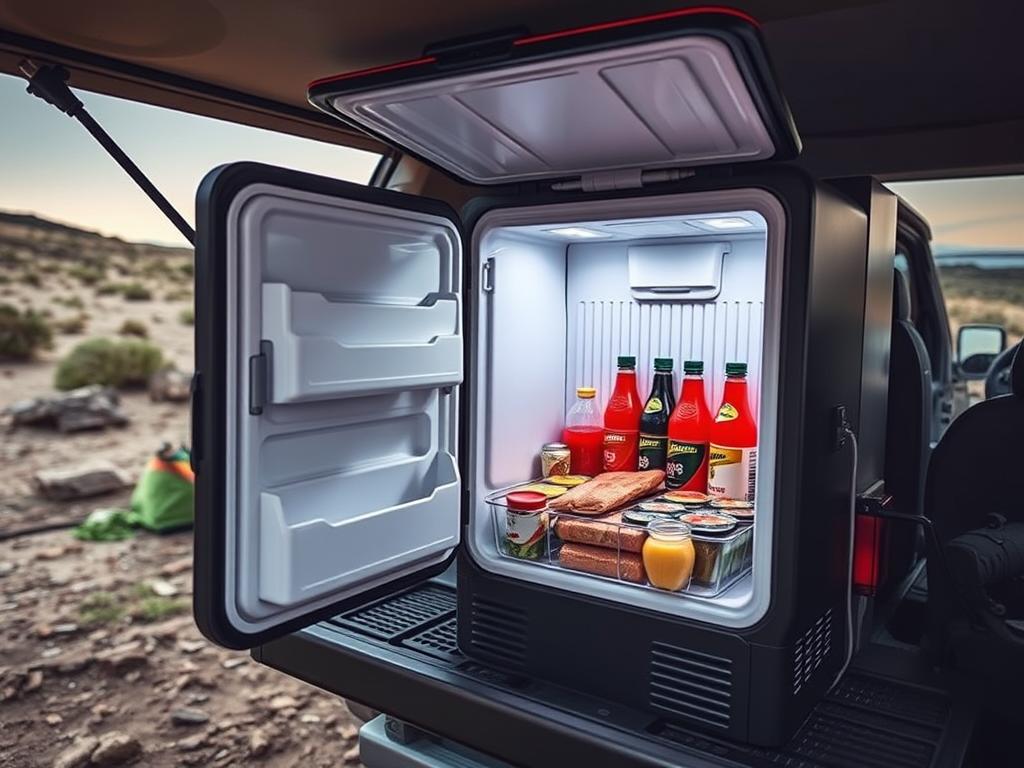
2. Vehicle Awning
Vehicle-mounted awnings provide instant shelter from sun and rain, creating a comfortable outdoor living space within minutes. Look for models with quick deployment, sturdy construction, and optional sidewalls for added weather protection.
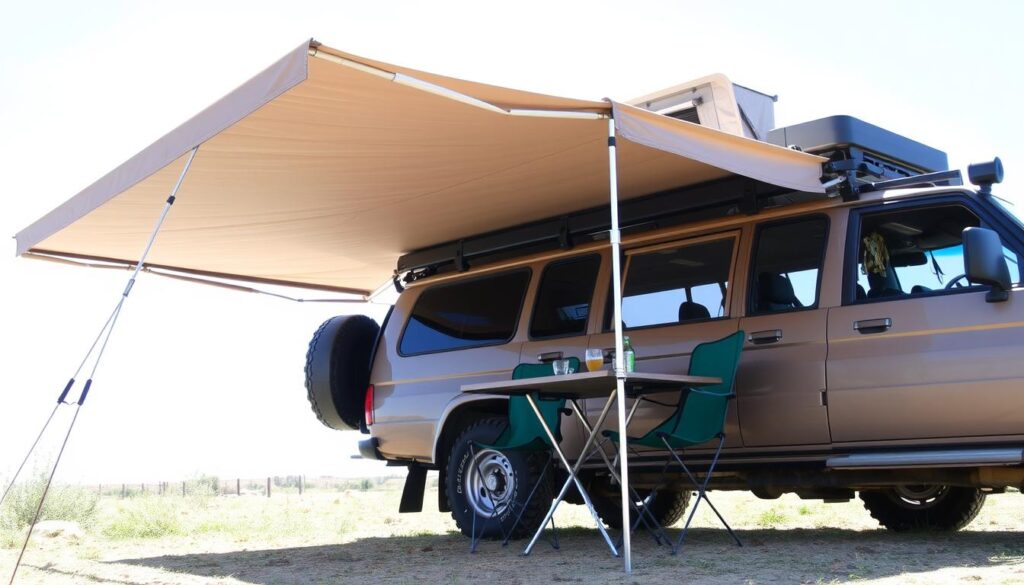
3. Seat Covers
Quality seat covers protect your vehicle’s interior from dirt, water, and UV damage while providing additional comfort. Neoprene or canvas covers designed specifically for off-road use offer water resistance and durability beyond standard covers.
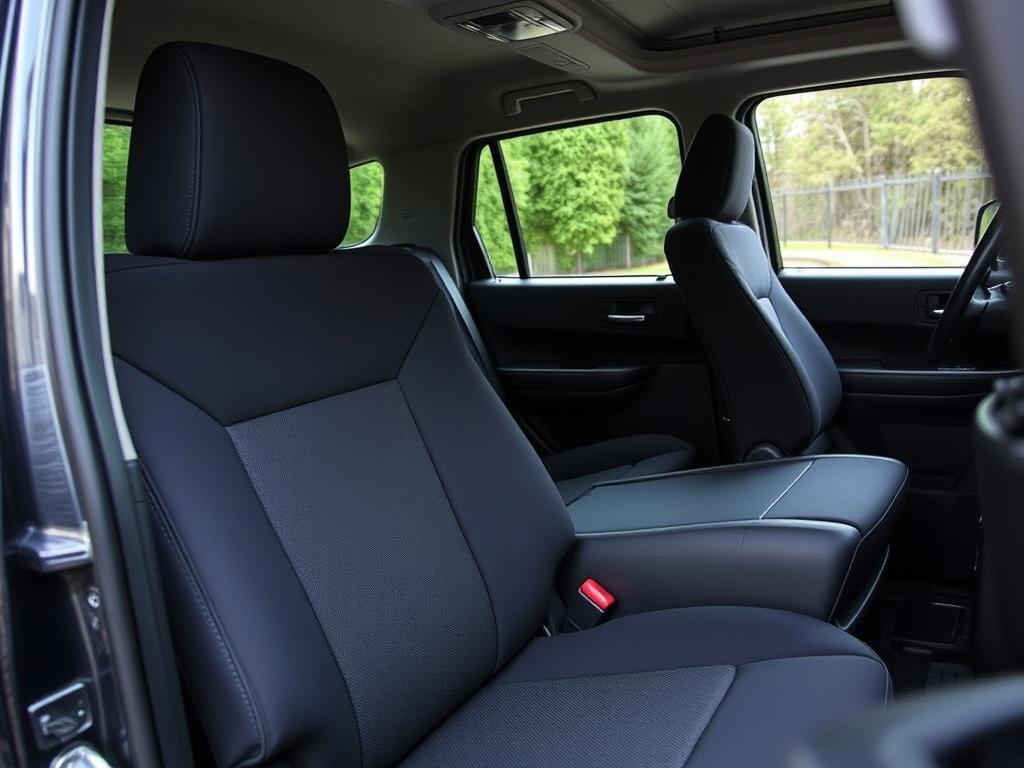
4. Portable Air Compressor
A reliable air compressor allows you to adjust tire pressures for different terrains—a critical capability for off-road performance and tire longevity. Look for models with adequate duty cycles and CFM ratings for your tire size.
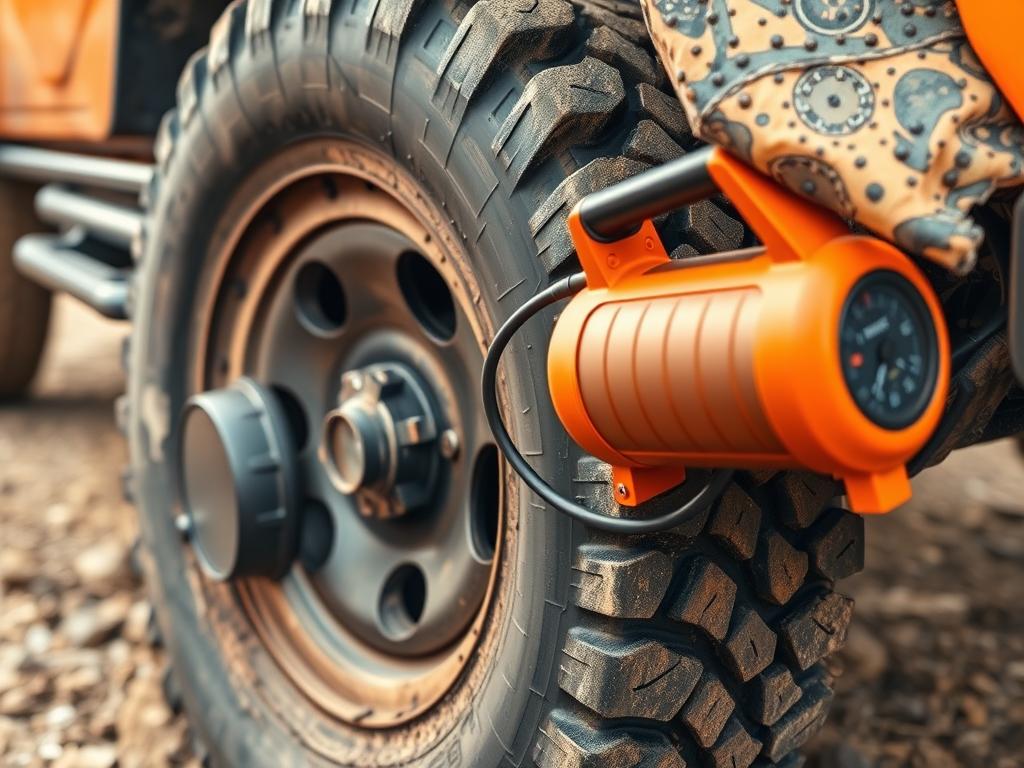
5. Water Storage System
Dedicated water tanks or portable containers ensure you have adequate clean water for drinking, cooking, and washing during remote adventures. Look for BPA-free containers with secure mounting options and protected spigots.
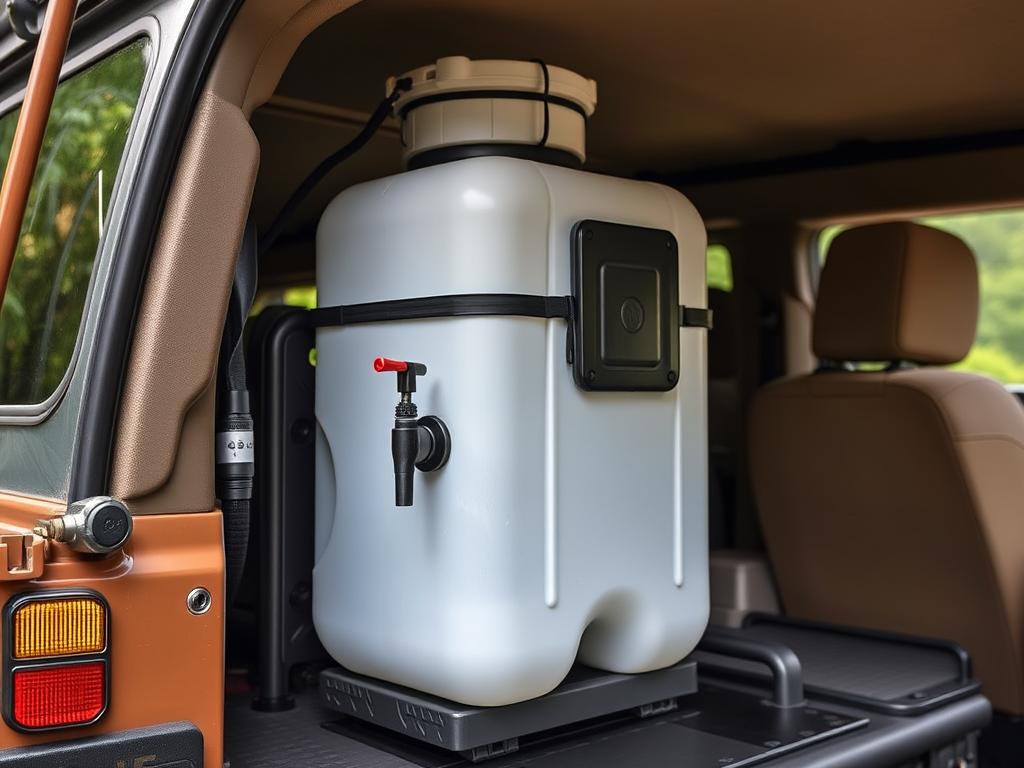
| Comfort Accessory | Average Price Range | Installation Difficulty | Adventure Value |
| 12V Fridge/Freezer (40-60L) | $700-$1,800 | None (Portable) | 5/5 |
| Vehicle Awning (2.5m) | $300-$1,200 | Easy | 4/5 |
| Neoprene Seat Covers (Set) | $200-$600 | Easy | 4/5 |
| Portable Air Compressor | $150-$700 | None (Portable) | 5/5 |
| Water Storage System (40L) | $100-$500 | Easy to Moderate | 5/5 |
Enhance Your Off-Road Experience
Comfort accessories transform challenging adventures into enjoyable experiences, even in remote locations.
Performance & Capability Upgrades
Performance accessories enhance your vehicle’s capability to tackle challenging terrain while maintaining reliability. These upgrades focus on improving traction, clearance, and overall off-road performance without sacrificing on-road drivability.
Pro Tip: Performance modifications should be approached as a system rather than individual parts. Components like suspension, tires, and gearing work together, and upgrading one often necessitates upgrading others for optimal performance and reliability.
1. All-Terrain or Mud-Terrain Tires
Purpose-built off-road tires dramatically improve traction on challenging surfaces. All-terrain tires offer a good balance of off-road capability and on-road comfort, while mud-terrains provide maximum traction in extreme conditions at the cost of increased road noise and reduced fuel economy.
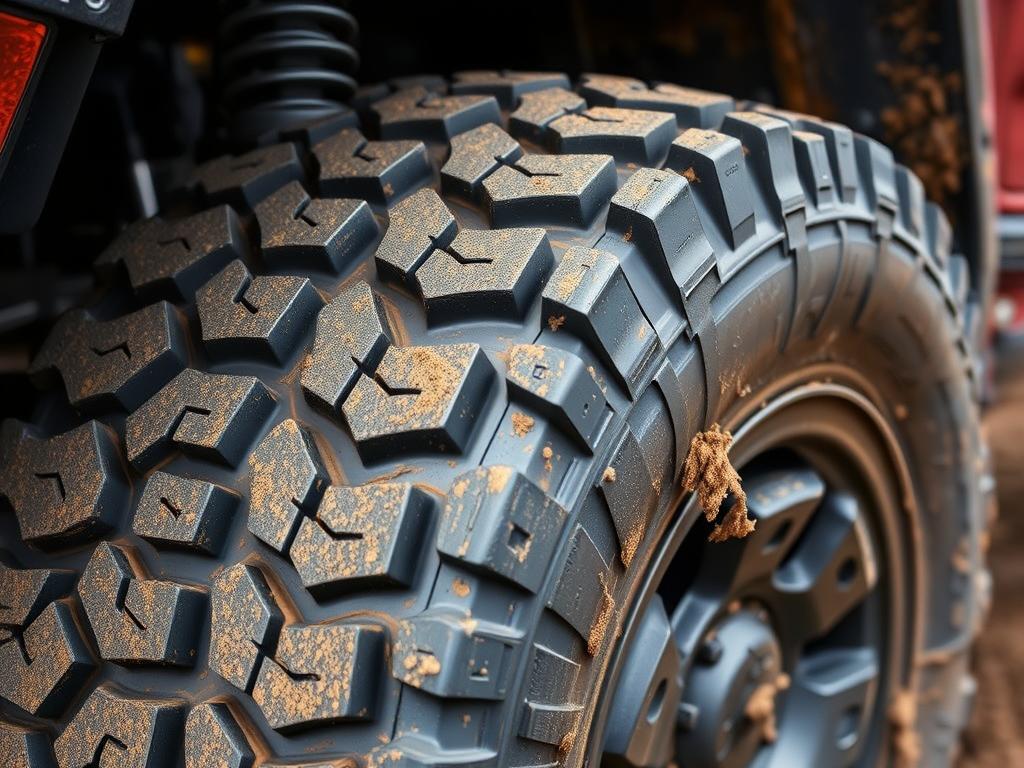
2. Suspension Lift Kit
A quality suspension lift increases ground clearance, allows for larger tires, and improves articulation for better off-road performance. Look for complete systems that include appropriate springs, shocks, and necessary components to maintain proper geometry.
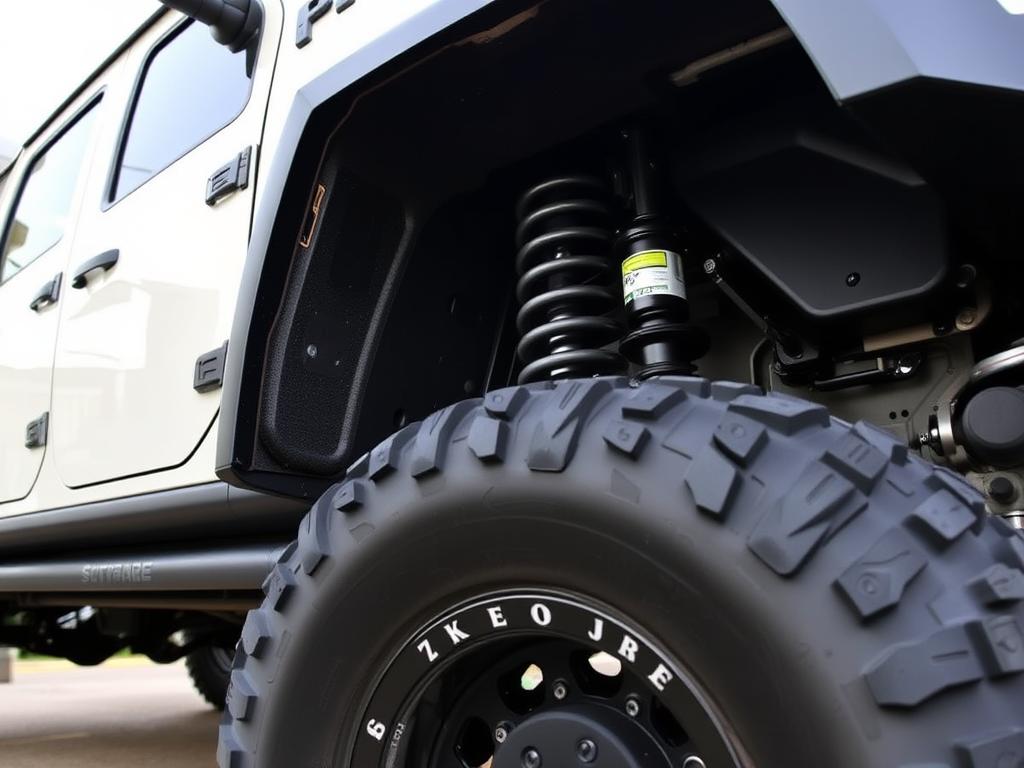
3. Snorkel Air Intake
A snorkel raises your engine’s air intake point, reducing the risk of water ingestion during deep water crossings and minimizing dust intake on dry trails. Modern designs offer improved airflow and water separation compared to older models.
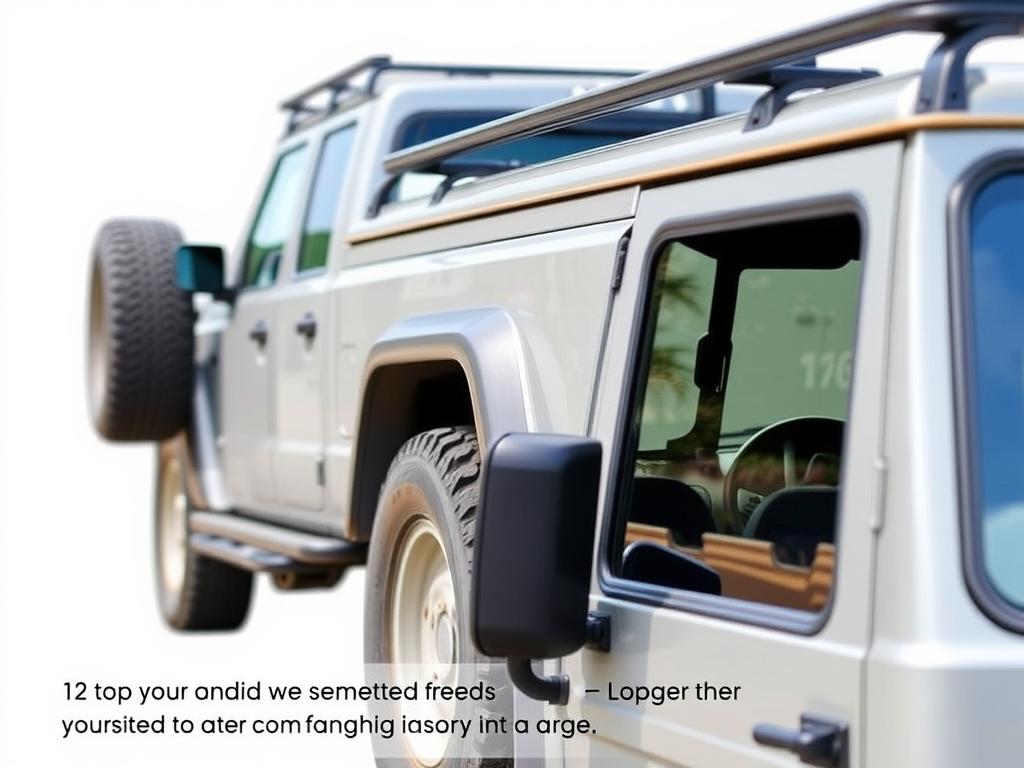
4. Differential Lockers
Locking differentials force both wheels on an axle to turn at the same speed, dramatically improving traction in challenging conditions. Available in automatic, selectable, or air-operated designs, lockers transform a vehicle’s off-road capability.
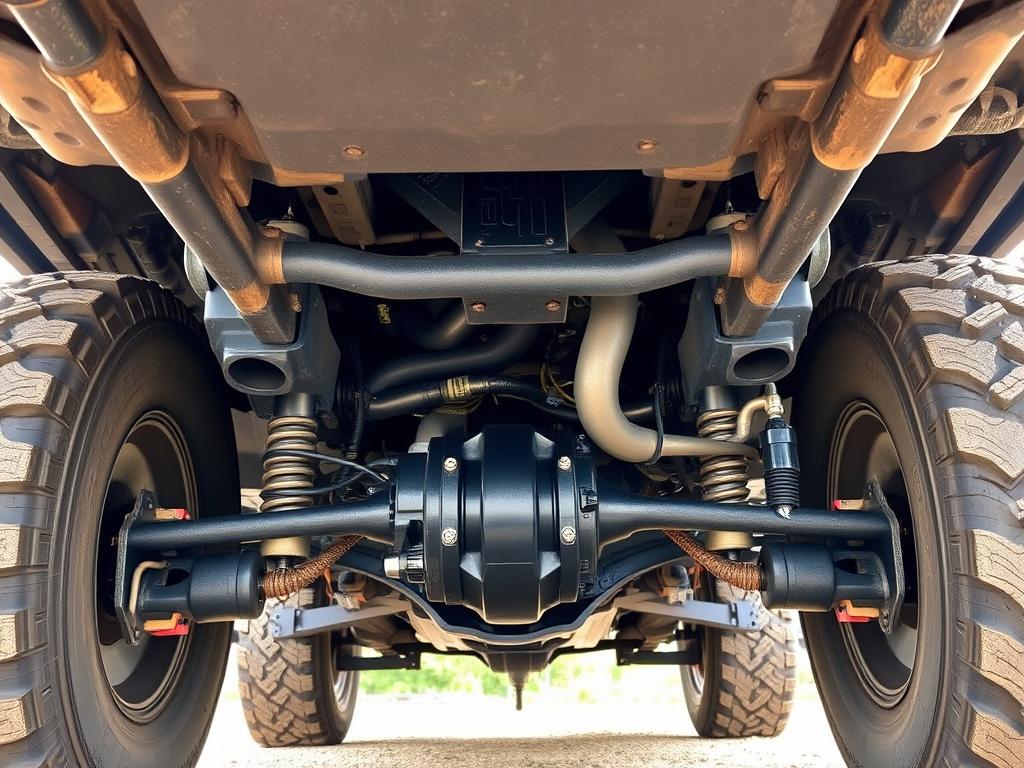
5. Long-Range Fuel Tank
Extended-range fuel tanks increase your vehicle’s range between refueling stops, essential for remote exploration. Quality tanks are constructed from impact-resistant materials and designed to maintain proper ground clearance.
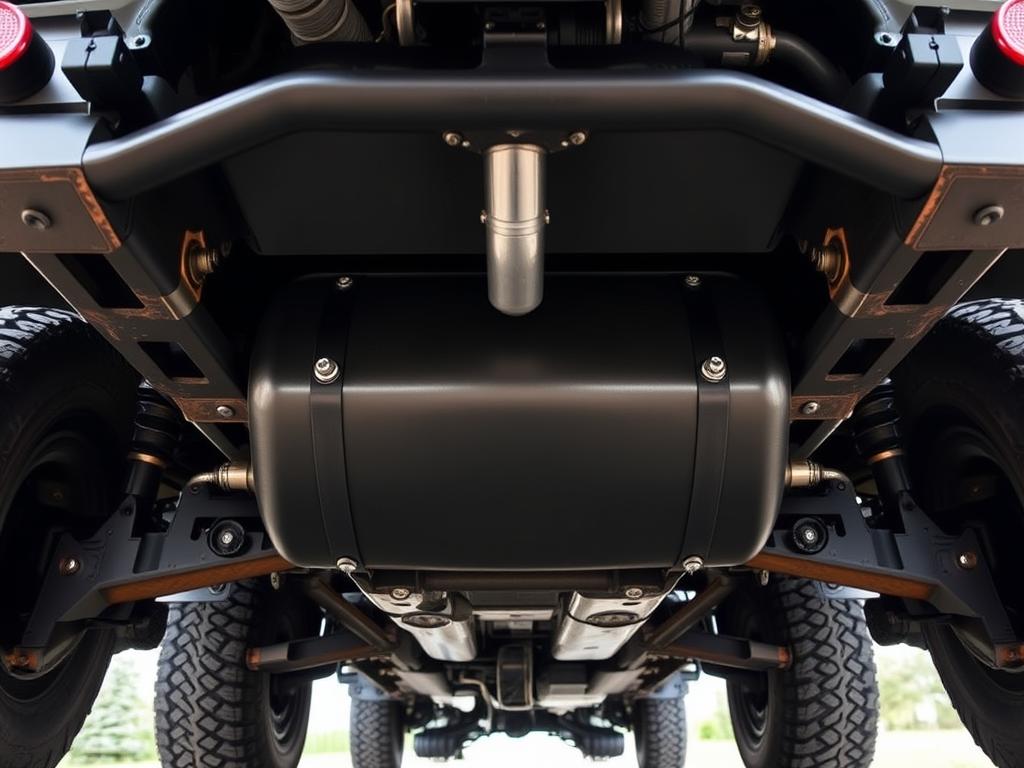
| Performance Upgrade | Average Price Range | Installation Difficulty | Performance Impact |
| All-Terrain Tires (Set) | $800-$1,600 | Professional Recommended | High |
| Suspension Lift Kit | $1,200-$3,500 | Professional Recommended | Very High |
| Snorkel Air Intake | $400-$800 | Moderate to Difficult | Moderate |
| Differential Lockers | $600-$1,500 per axle | Professional Required | Very High |
| Long-Range Fuel Tank | $800-$2,000 | Professional Recommended | Moderate |
Upgrade Your Off-Road Capability
Performance upgrades transform your vehicle’s capabilities, allowing you to tackle more challenging terrain with confidence.
Key Factors to Consider When Choosing 4×4 Accessories
Selecting the right accessories for your 4×4 requires careful consideration of several important factors. Making informed choices ensures your upgrades enhance your vehicle’s capabilities while maintaining reliability and safety.
Vehicle Compatibility
Not all accessories fit all vehicles, and even those marketed as “universal” may require modifications. Always verify compatibility with your specific make, model, and year before purchasing. Consider:
- Vehicle-specific mounting points and hardware
- Weight ratings and load capacities
- Electrical system compatibility
- Impact on vehicle warranty
- Regulatory compliance in your region
Material Quality & Durability
Off-road accessories face harsh conditions and must withstand vibration, impacts, extreme temperatures, and exposure to elements. Quality construction makes a significant difference in longevity and performance.
- Corrosion-resistant materials and finishes
- UV-stabilized plastics for exterior components
- Proper heat treatment of metal components
- Quality of welds and mounting hardware
- Manufacturer reputation and warranty support
Installation Requirements
Consider the complexity of installation before purchasing accessories. Some items are simple DIY projects, while others require specialized tools, skills, or professional installation.
- Tools and equipment needed
- Technical knowledge required
- Time commitment for installation
- Availability of detailed instructions
- Cost of professional installation if needed
Weight Considerations
Every accessory adds weight to your vehicle, affecting fuel economy, handling, and overall payload capacity. Be mindful of the cumulative weight of all accessories.
- Individual and combined accessory weight
- Impact on vehicle’s payload capacity
- Effect on fuel consumption
- Weight distribution and center of gravity
- Potential need for suspension upgrades
Intended Use & Terrain
Your typical off-road environment should guide accessory selection. Desert explorers have different needs than those tackling muddy trails or rocky mountain passes.
- Primary terrain types you’ll encounter
- Typical trip duration and remoteness
- Climate and weather conditions
- Water crossing requirements
- Balance between off-road and on-road use
Budget Allocation
With limited funds, prioritize accessories that enhance safety and capability for your specific needs rather than spreading your budget across too many items.
- Essential vs. nice-to-have accessories
- Long-term value and durability
- Potential for phased upgrades over time
- Resale value consideration
- Maintenance and replacement costs
Pro Tip: Create a prioritized list of accessories based on your specific off-road goals and typical terrain. Focus first on safety and recovery gear, then add comfort and convenience items as budget allows.
Budget-Friendly vs. Premium Options
The price range for 4×4 accessories varies dramatically, from budget-friendly basics to premium options with advanced features. Understanding the differences helps you make informed decisions based on your needs and budget constraints.
| Accessory Category | Budget Option | Mid-Range Option | Premium Option | Key Differences |
| Bull Bar | $500-$800 Basic steel construction |
$800-$1,500 Improved design with winch compatibility |
$1,500-$2,500 Integrated features, superior finish |
Premium options offer better approach angles, integrated light mounts, and superior corrosion resistance |
| Roof Rack | $300-$600 Basic steel construction |
$600-$1,200 Aluminum construction |
$1,200-$2,000 Modular design with accessories |
Premium racks offer lower weight, modular expansion options, and improved aerodynamics |
| Suspension Lift | $400-$800 Basic spacer lift |
$800-$1,800 Complete spring/shock kit |
$1,800-$3,500 Adjustable system with reservoirs |
Premium systems offer adjustable damping, remote reservoirs, and progressive spring rates |
| Recovery Gear | $200-$400 Basic recovery kit |
$400-$800 Enhanced kit with better components |
$800-$1,500 Professional-grade equipment |
Premium gear offers higher breaking strength, better durability, and advanced materials like synthetic rope |
| 12V Fridge | $400-$700 Basic thermoelectric cooler |
$700-$1,200 Single-zone compressor fridge |
$1,200-$1,800 Dual-zone with advanced features |
Premium fridges offer better insulation, lower power consumption, and features like dual zones and digital controls |
When to Choose Budget Options
- You’re new to off-roading and testing the waters
- The accessory isn’t critical to your typical usage
- You’re on a tight overall budget and need basic functionality
- The item will see only occasional or light use
- You plan to upgrade later as your needs evolve
When to Invest in Premium
- The accessory is critical for safety or recovery
- You regularly tackle challenging terrain
- You take extended trips to remote areas
- The accessory will see frequent or heavy use
- You value additional features and durability
Pro Tip: For critical safety and recovery gear, it’s often worth stretching your budget for higher quality. For convenience items, budget options may provide adequate functionality while you save for premium upgrades.
Installation Tips & Maintenance Recommendations
Proper installation and regular maintenance ensure your 4×4 accessories perform reliably when you need them most. Following best practices extends the life of your gear and prevents failures during critical moments on the trail.
Installation Best Practices
- Research thoroughly before starting. Read installation instructions completely before beginning and search for vehicle-specific guides or videos.
- Gather all necessary tools and parts. Nothing derails an installation like missing a critical tool or fastener midway through.
- Allow adequate time. Most installations take longer than expected, especially for first-timers. Don’t rush critical steps.
- Use proper torque specifications. Under or over-tightening fasteners can lead to premature failure or damage.
- Apply anti-seize or thread locker where appropriate. This prevents fasteners from corroding in place or vibrating loose.
- Document modifications. Take photos during installation and keep records of what was modified for future reference.
- Test thoroughly before heading off-road. Verify all systems work properly in controlled conditions before relying on them in remote areas.
When to Seek Professional Installation:
- Modifications affecting critical safety systems
- Complex electrical system integrations
- Installations requiring specialized tools
- Modifications that could affect vehicle warranty
- When you lack confidence in your mechanical skills
Maintenance Recommendations
- Develop a pre-trip inspection routine. Check all accessories for secure mounting, proper function, and signs of wear before each adventure.
- Clean thoroughly after off-road use. Mud, dust, and especially salt can accelerate corrosion if left on components.
- Regularly check and re-torque fasteners. Vibration from off-road driving can loosen bolts and mounting hardware.
- Lubricate moving parts according to manufacturer recommendations. This includes hinges, latches, and mechanical components.
- Address minor issues promptly. Small problems often develop into major failures if ignored.
- Inspect electrical connections regularly. Vibration and exposure can compromise wiring, especially in harsh environments.
- Keep recovery gear clean and properly stored. Inspect for damage or wear before each use, as failure during recovery can be dangerous.
Seasonal Maintenance Tasks:
- Apply protective coatings to metal components
- Treat fabric items with appropriate UV and water repellents
- Deep clean electrical connections and apply dielectric grease
- Inspect and replace worn mounting hardware
- Check and update emergency repair kits and tools
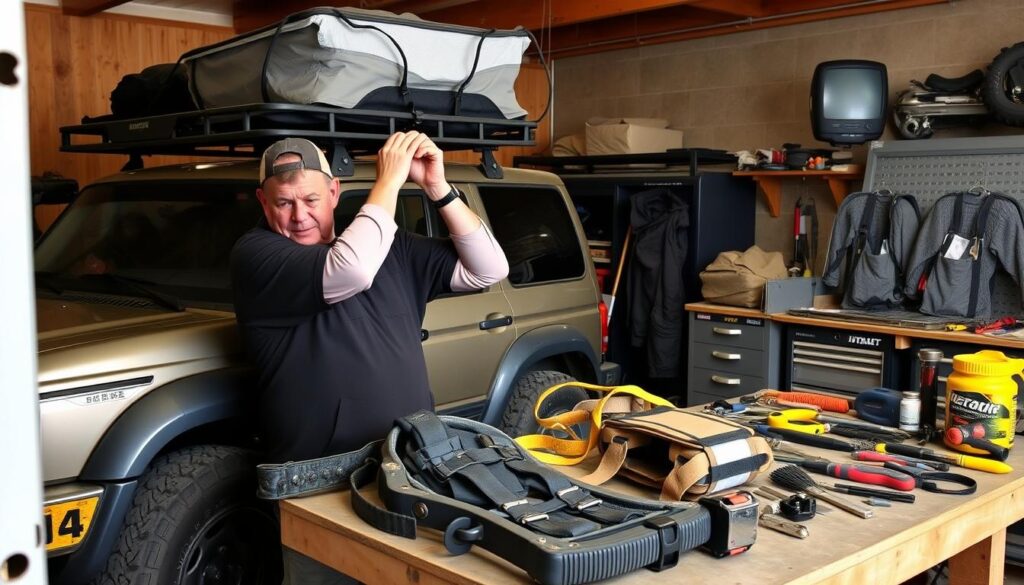
Pro Tip: Create a digital or printed maintenance log for your 4×4 accessories. Track installation dates, maintenance performed, and any issues encountered. This record becomes invaluable for troubleshooting and planning preventive maintenance.
Final Checklist for Off-Road Preparation
Before heading out on your next off-road adventure, use this comprehensive checklist to ensure your 4×4 and its accessories are properly prepared. This methodical approach helps prevent overlooked items that could impact your trip’s safety or enjoyment.
Vehicle Systems
- Check engine oil level and condition
- Inspect transmission and differential fluids
- Verify coolant level and condition
- Test battery condition and connections
- Inspect brake pads, rotors, and fluid
- Check steering components and fluid
- Inspect suspension components for wear
- Test all lights and electrical systems
- Check fuel level and range calculations
Accessories & Equipment
- Verify all mounting hardware is tight
- Test winch operation and remote
- Inspect recovery straps for damage
- Check tire pressure (adjusted for terrain)
- Verify spare tire condition and pressure
- Test air compressor functionality
- Check operation of auxiliary lighting
- Verify fridge operation and temperature
- Ensure recovery gear is complete and accessible
- Test communication equipment (UHF/satellite)
Supplies & Documentation
- Pack adequate water (4L per person per day minimum)
- Prepare food and cooking equipment
- Pack appropriate clothing for conditions
- Prepare first aid kit and medications
- Bring vehicle documentation and insurance
- Pack permits for restricted areas
- Bring paper maps as GPS backup
- Prepare emergency contact information
- Pack basic tool kit and spare parts
- Bring fire extinguisher and emergency beacon
Pro Tip: Share your trip plan, including routes and expected return time, with a trusted contact who is not traveling with you. Establish check-in protocols and clear instructions on when and how to initiate emergency procedures if you don’t check in as scheduled.
“The best off-road adventures are those where the biggest challenges are the trails themselves—not equipment failures or forgotten essentials. Thorough preparation is what separates enjoyable expeditions from stressful ordeals.”
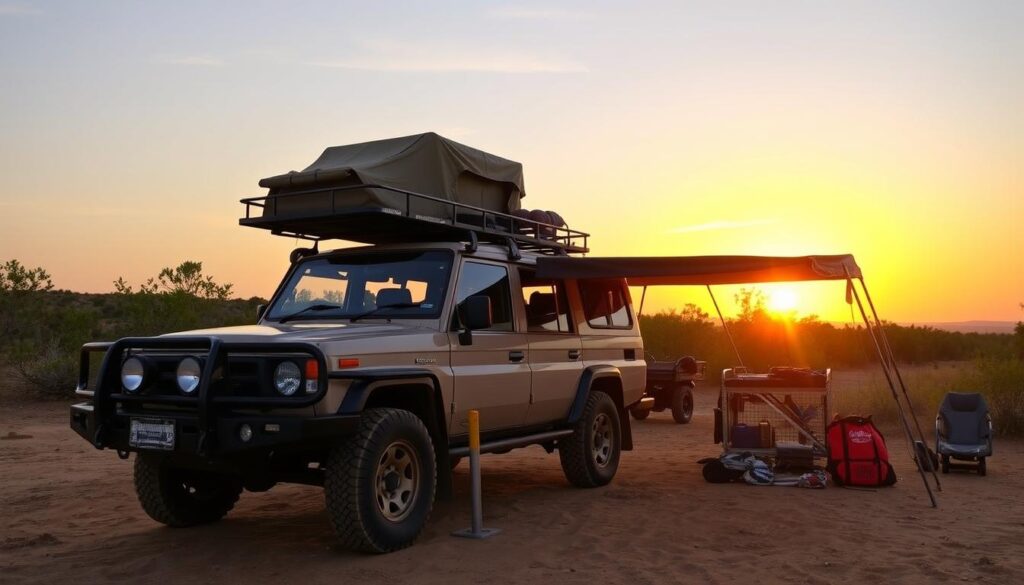
Ready for Your Next Off-Road Adventure
Equipping your 4×4 with the right accessories transforms it from a capable vehicle into an expedition-ready machine that can take you to remarkable destinations with confidence and comfort. By prioritizing quality protection, recovery capability, effective storage, essential comfort items, and key performance upgrades, you’ll be prepared for whatever challenges the trail presents.
Remember that building your ideal off-road setup is a journey in itself. Start with the essentials that address safety and basic functionality, then add convenience and performance accessories as your experience and budget allow. Each adventure will help you refine your gear choices based on real-world needs rather than marketing promises.
Most importantly, the best accessories are those that enable more memorable adventures while providing peace of mind. Invest wisely in quality components, maintain them properly, and they’ll serve you reliably for years of exploration.
Get Expert Advice for Your 4×4 Build
Every vehicle and adventure style is unique. Consult with 4×4 specialists to create the perfect setup for your specific needs.

